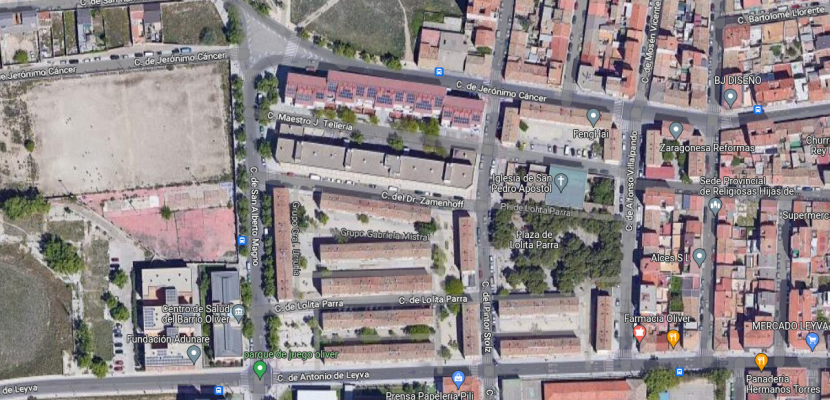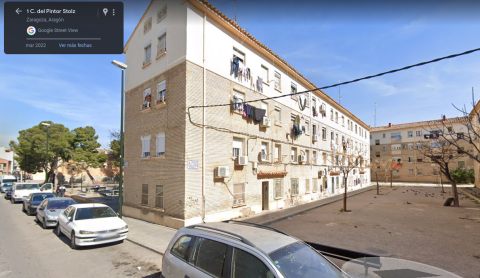
Making community in Gabriela Mistral. Neighbourhood Oliver

About this good practice
The ‘Gabriela Mistral’ housing group in the Oliver neighbourhood consists of a group of 288 dwellings built in 1955. They are four-storey buildings without lifts, of small dimensions, without heating or adequate insulation. It is a physically and socially deteriorated area, according to data from the European Association Poverty Net (EAPN) it is one of the areas with the highest poverty indicators in Aragon. The composition of its residents is diverse: elderly people and families in a precarious economic situation with a high percentage of people of Roma and migrant origin. The mortgage crisis of 2008 has led to an increase in the number of occupied dwellings.
The project carried out by the Social Services Municipal Center (CMSS) has consisted of intervention in 3 of these blocks using the CMSS' own resources. On the one hand, some material improvements in the common areas carried out with an employment project where the people employed are CMSS users, some of them residents of these dwellings. On the other hand, interventions at individual/family and group level by the CMSS team with the aim of involving the resident families in the care, favouring coexistence and supporting the organisation of the community of neighbours.
Resources needed
The funding came from the City Council's own funds.
The human resources have been the multidisciplinary team of the Municipal Centre of Social Services of Oliver.
The material resources were provided by the Municipal Social Services Centre.
Evidence of success
The achievements represent improvements in quality of life.
In the individuals and families, it can be observed that the story of institutional abandonment has diminished and there is an appreciation of the intervention, neighbourhood relations have improved.
The professional team has found greater opportunities for intervention; motivation has also been reinforced in the interventions.
Two of the three communities have formally organised themselves as a community of neighbours.
Potential for learning or transfer
We believe that it has a great potential for learning or knowledge transfer as it has created a sense of belonging to a community, improved the quality of life of the residents, the material and social conditions with a comprehensive intervention. We have not only intervened from a material point of view, but, above all, from the point of view of improving social conditions by achieving a sense of community.
Further information
Images
